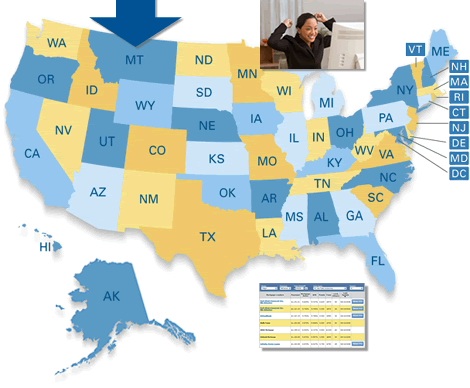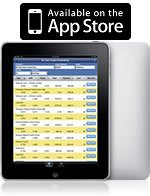Understanding the HELOC Repayment Process: An Essential Financial Tool Explained
For many homeowners, a Home Equity Line of Credit (HELOC) serves as a dynamic financial instrument for accessing funds against the value of their property. Navigating the complexities of the HELOC repayment process begins with comprehending its function as a unique credit line. This flexible option relies on your home's equity—the portion of your property that you actually own—to offer a revolving credit line. In contrast to traditional mortgage products, a HELOC operates with distinct procedures in both accessing the funds and the subsequent repayment phase.
Our in-depth exploration demystifies the intricacies of HELOCs, emphasizing the differences between this method of borrowing and a more conventional mortgage. As you advance through this guide, you will gather insights on how the HELOC works, unveil strategies to manage your finances effectively during the loan's life cycle, and understand the gradual transition from drawing funds to fulfilling your repayment obligations. Let's embark on this journey to ensure that you make well-informed decisions harnessing the full potential of your home's accumulated equity through a HELOC.
Exploring the Versatility: How HELOC Funds Can Be Used
A Home Equity Line of Credit (HELOC) is not just another credit line; it's a versatile financial tool that can be tailored to meet various personal and financial needs. Understanding the flexibility in how you can use HELOC funds is crucial for making informed financial decisions. Let's delve into some of the common uses for a HELOC.
HELOC as a Flexible Source of Borrowed Money
The flexibility of a HELOC lies in its structure, allowing borrowers to access funds up to a certain limit as needed, similar to a credit card. It provides a solution when liquidity is essential, and funds are required over an extended period, rather than in a lump sum. This access to equity built up in your home can be a game-changer for your financial strategy.
Various Financial Needs HELOC Can Fulfill
- Home Renovation: Whether you're looking to upgrade your kitchen, add a new bedroom, or undertake a significant landscape project, a HELOC can provide you with the funds to bring your home improvement dreams to life. Investing in your property can also increase your home's value, a win-win situation.
- Debt Consolidation: With typically lower interest rates compared to credit cards and personal loans, a HELOC can be an effective way to consolidate and pay off high-interest debts, eventually leading to a more manageable financial situation and potentially less interest paid over time.
From funding educational pursuits to covering unexpected medical expenses, the wide-ranging uses of a HELOC make it a powerful financial resource. However, as with all forms of credit, responsible usage and repayment are key to maintaining financial health.
The Two Phases of a HELOC: Draw Period and Repayment Period
Understanding the functionality of a Home Equity Line of Credit (HELOC) is essential for homeowners leveraging their equity to access funds. Central to this understanding are the two primary phases of a HELOC: the draw period and the repayment period. Each phase has distinct rules and impacts on your repayment strategy.
Explanation of the Draw Period
The draw period marks the initial phase of a HELOC. During this time, borrowers have the flexibility to access funds from their credit line as needed. This phase typically spans several years, and throughout it, borrowers can withdraw money up to the maximum limit set by the lender.
- Accessing funds: Borrowers can draw from the HELOC using special checks, a card, or through bank transfers.
- Interest-Only Payments: Though not applicable to all HELOCs, many offer the option to make interest-only payments during the draw period, providing financial flexibility to the borrower.
Transitioning to the Repayment Period
Following the conclusion of the draw period, a HELOC transitions into the repayment period. This marks a pivotal change in the borrower's responsibilities:
- Principal and Interest Payments: Borrowers are now required to make payments towards both the principal and interest, which could substantially increase monthly payments relative to the interest-only payments made during the draw period.
It is crucial for borrowers to plan for this transition, as it will affect the total monthly payment amounts and consequently, their personal finances. No additional funds can be drawn once the HELOC enters the repayment phase, and the focus shifts entirely to paying back the borrowed amount within the prescribed timeframe.
Understanding HELOC Payments
When navigating the repayment process of a Home Equity Line of Credit (HELOC), it's crucial to understand how HELOC payments work. These payments can vary based on the lender's terms and the agreement you've entered into. Below, we provide a clear explanation of the elements that compose HELOC payments, which are critical to managing your financial responsibilities effectively.
The Structure of Minimum Monthly Payments
Typically, during the draw period of a HELOC, the minimum monthly payment is limited to the interest generated by the borrowed amount. Interest is calculated daily and billed monthly based on the outstanding balance, turning your HELOC into a revolving line of credit with flexible payment amounts. However, once the draw period ends and the repayment period kicks in, the structure of payments shifts. You'll then begin to repay both the principal and the interest, leading to higher monthly payments.
Interest Calculations for a HELOC
Interest on a HELOC is usually set at a variable rate tied to a public index, such as the prime rate. Hence, the interest you owe can fluctuate based on market conditions. To calculate the interest due, the daily balance is multiplied by the daily interest rate, which is the annual interest rate divided by 365 days.
Options for Lump-Sum Repayment
Some borrowers may opt for a lump-sum repayment strategy. This involves making large payments, potentially up to the full outstanding balance, before the end of the draw period. Such payments can help lower future monthly obligations or completely settle the debt before transitioning into the repayment period. Always review your lender’s policy, as some may impose penalties for early repayment.
- Minimum Monthly Payments: What you're required to pay during the draw period is typically the interest alone. However, you can pay more to reduce the principal.
- Interest-Only Payments: This is a feature during the draw period which allows lower payments but can lead to higher costs long-term.
- Repayment Period: After the draw period ends, you will pay back both principal and interest, which leads to higher monthly payments.
- HELOC Maturity: The point at which the HELOC term ends; all outstanding balances must be paid in full.
- Lump-Sum Repayment: An optional approach to repay the balance quicker and with less interest accumulation.
It's essential for HELOC borrowers to plan ahead for the repayment phase to avoid financial strain. Consider your long-term financial capacity and potential rate increases when calculating your ability to meet HELOC payments. For more detailed information, please refer to other sections of this resource or consult with a financial advisor.
Fannie Mae & Jumbo Mortgage Rates
Just One Click! = Current Rate Chart

Start by selecting your state

Home Equity Line - Documentation
Home Equity Line vs Second Mortgage
Which Secondary Financing is best for me?
Home Equity Loans: Paychecks from your Home
Home Equity Loan Shopping: Tips and Types
Home Equity Line New Appraisal
Home Equity No Income Qualifier
Home Equity Typical Loan Terms
Home Equity Loan vs Refinance First Mtg
Second Mortgage, HELOC for Invest Prop
Use Your Home to Get Away: Home Equity Loans with Frequent Flyer Programs
Lower your monthly payments Debt Consolidation Calculator
